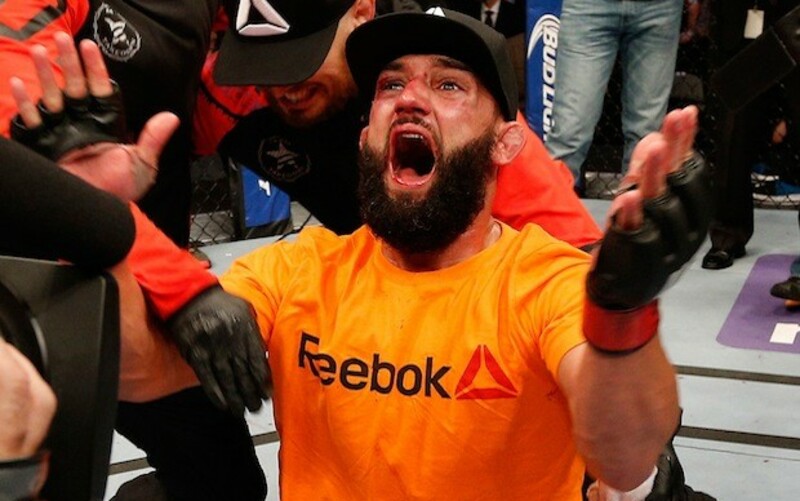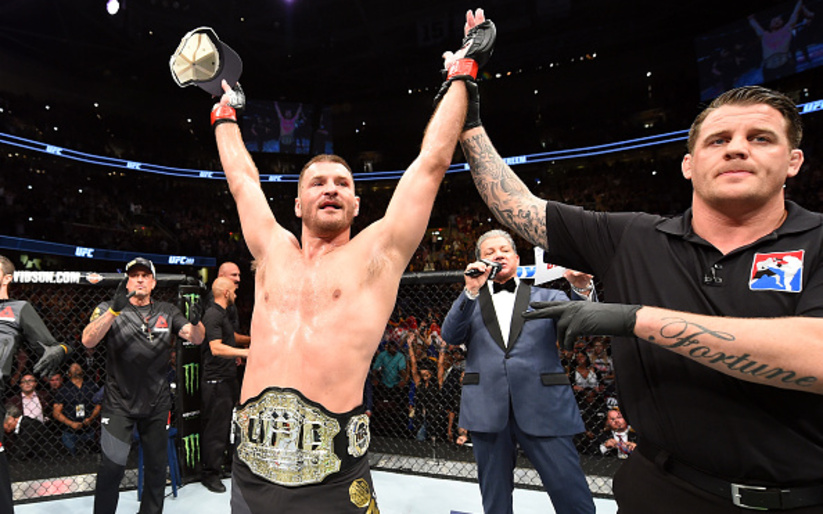The details of the UFC-Reebok sponsorship pay scale are out, and the reaction has not been pretty. Fighters aren’t happy. Media aren’t happy. Even Joe Rogan spoke up about how he isn’t happy.
Not everyone is unhappy. Joe Lauzon finds the pay scale agreeable. But at 18 UFC fights, he’s only two fights away from hitting the max bonus tier. Lauzon says he made $24,000 in sponsorships for his last fight. Lauzon will make $15,000 from Reebok in each of his next two fights. After that, he’ll make $20,000 per fight. This might be an equitable tradeoff for Lauzon, who doesn’t have to worry about deadbeats sponsors and (likely) his manager taking a cut.
But Lauzon is a unique case. The majority of fighters under contract fall into the 1-5 bucket. A marketable fighter like Urijah Faber, who has over 20 Zuffa fights, is losing far more than a Joe Lauzon.
The obvious issue is that the pay scale seems low. Bloody Elbow’s Paul Gift found that payouts would have fallen short by amount $5 million of the deal’s $11.67 million average value. The UFC has said the “vast majority” of the Reebok money would go to the fighters, and the only money taken out would be used to cover operating costs. One assumes operating costs wouldn’t come close to half the deal.
The other issue is the scale itself. A fighter in his first fight is paid the same as a fighter in his fifth fight. A fighter in his sixth fight is paid the same as a fighter in his tenth. Those are significant disparities in both experience and what it says about how the UFC values the fighter.
And while the switch from a rankings-based system to one based on tenure is an improvement, it leaves established, ranked fighters with a limited amount of Zuffa tenure like Eddie Alvarez (one fight) and Gilbert Melendez (six fights) in an unfair situation.
Some people have suggested the UFC and Reebok allow the fighters to sell a patch of their own. That’s a good idea. That might be a non-starter, though, so I’ve come up with a couple different ideas for how the UFC and Reebok can make good with the pay structure. These ideas assume a $10 million payout pool, which is both a nice round number and seems like a fair estimate of the UFC’s operating costs. Champion and challengers both revert to the max tenure number.
The first suggestion assumes the UFC wants to stick with the a tenure-only model. Instead of tiers, money increases with each appearance until the 20th fight.
Fights | Compensation 1 $2,000 2 $2,700 3 $3,100 4 $3,600 5 $4,200 6 $5,000 7 $5,700 8 $6,600 9 $7,700 10 $9,000 11 $10,500 12 $12,100 13 $14,000 14 $16,000 15 $19,000 16 $22,000 17 $26,000 18 $30,000 19 $35,000 20+ $40,000
Using Gift’s breakdown of UFC fights, assuming each fighter on the roster fights twice a year on average, and adjusting for 20 title fights a year, this structure would payout an estimated $8.9 million dollars.
The second system combines tenure with place on the card. Under this system, the tenure structure looks like this:
Fights | Compensation 1 $1,500 2 $2,000 3 $2,400 4 $2,700 5 $3,200 6 $3,700 7 $4,300 8 $5,000 9 $5,800 10 $6,700 11 $7,800 12 $9,100 13 $10,500 14 $12,300 15 $14,200 16 $16,500 17 $19,000 18 $22,000 19 $26,000 20+ $30,000
The card-placement structure looks like this:
PPV and Fox main events $15,000 PPV and Fox co-main $7,500 PPV, PPV FS1 prelims, $3,000 Fox, Fox FS1 prelims, FS1 and Fight Pass main Everything else $1,500
Using the same criteria as earlier, this system would pay out an estimated $8.6 million.
Both these models fall about a million short of our $10 million budget. To make the difference, fighters would be paid a $1,000 bonus for each fight past the second over a calendar. So, a fighter in his third fight over the last twelve months would receive an additional $3,000. In 2014, 89 fighters fought three times, 12 fighters fought four times, and 2 fighters fought five times. Assuming they maintained that pace the year prior (so they received the bracket’s full bonus in each fight), this would take on an extra $1.04 million, and bring us right into the $10 million range for each model.
Here’s how each system would have looked for a handful of fighters in their last fight:
Fighter | Card | UFC | Plan 1 | Plan 2 Melendez | UFC 181 | $30,000 | $40,000 | $45,000 Alvarez | UFC 178 | $2,500 | $2,000 | $9,000 Faber | UFC 181 | $20,000 | $44,000 | $37,000 Iaquinta | UFC FN 63 | $5,000 | $12,700 | $12,300 Masvidal | UFC FN 63 | $10,000 | $14,500 | $13,300 Rockhold | Fox 15 | $5,000 | $10,600 | $24,000 Jedrzejczyk | UFC 185 | $30,000 | $43,000 | $40,500
One obvious consequence of Plan 2 is the importance of card placement. In his last two fights, Urijah Faber has been content to take the “main event” slot of a Fox Sports 1 prelim block. This made sense with individual sponsors for a marketable fighter like Faber, as the UFC 175 and UFC 181 prelims averaged one million and 840,000 viewers respectively. Faber may be less willing to take that slot under the current system, though the compensation for that slot could always be modified as an incentive.
The UFC believes (or wants us to believe) the Reebok deal is a long-term net positive for its fighters. They’ve used the guaranteed money as a selling point, but leaving $5 million seemingly unaccounted for works against that. How much are the operating costs? If they’re less than $5 million (and that seems like a reasonable assumption), where is the rest of the money going? And while the tenure-based system is an improvement over the rankings, how can you justify paying a marketable top fighter like Luke Rockhold $5,000 to appear in a Fox main event?
Fighter reaction to the Reebok pay structure has been one of the few times the roster has expressed their displeasure on a large scale. It’s a bad look for both the UFC and Reebok, especially after negotiating this deal without the fighters having a say in it. These proposals may not be perfect – there may not be a perfect system – but they both seem to be an immediate improvement over the UFC’s plan.



